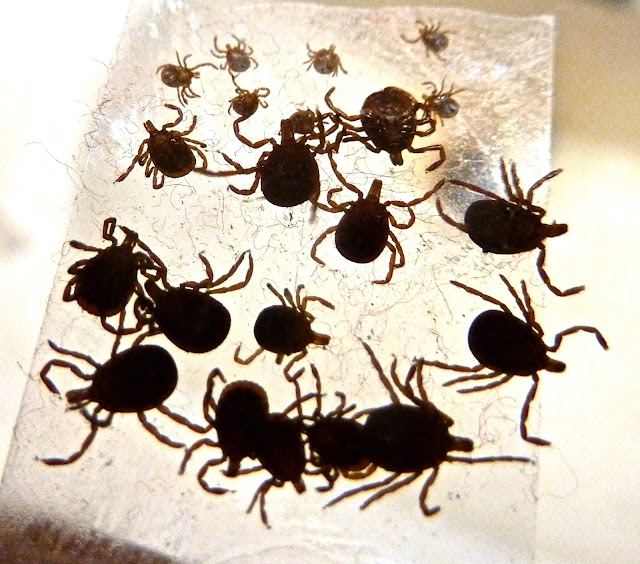It is tick season in the Ozarks and combined with COVID-19 there has been a lot of news stories bordering on the sensational. This led me to thinking of our history with the ticks of Bull Creek. Above is one weekend in 2013 compiled on a piece of tape with all three stages all three stages represented.
"Most ticks go through four life stages: egg, six-legged larva,
eight-legged nymph, and adult. After hatching from the eggs, ticks must
eat blood at every stage to survive. Ticks that require this many hosts
can take up to 3 years to complete their full life cycle, and most will
die because they don’t find a host for their next feeding." CDC
 |
| American dog tick - male |
Since the first instar hasn't had a chance to ingest a pathogen, it won't transmit a disease. In addition to infectious diseases such as ehrlichiosis, Lyme disease and Rocky Mountain spotted fever, there is the recently discovered alpha-gal. This is an allergic reaction triggered by eating red meat as discussed in this Mayo Clinic link.
 |
| First instar filling up - annoying only |
Alpha-gal is only transmitted by Lone Star ticks. Since these are common in Missouri it is important to know the symptoms which include itching, hives, swelling of the face and lips and difficulty breathing. Symptoms frequently first appear hours after ingesting red meat products.
If you haven't had enough, here is a video of our Ticks of Bull Creek. Then for fun, listen to Tick Pickin Time in the Ozarks, sung by our special friend Annie Shelton, written for her by her late grandmother Winnie.

